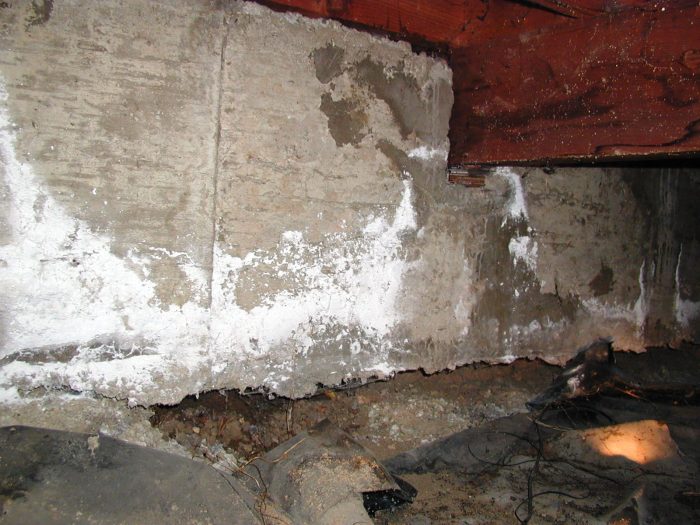
EFFLORESCENCE: Formation and Effects
- Limestone is burned to produce calcium oxide, which is added to concrete.
- At contact with water, calcium oxide turns to calcium hydroxide.
- Contact with carbon dioxide reduces the alkalinity of calcium hydroxide, which allows it to degrade the passivity surrounding and protecting embedded steel.
- Corroded steel expands to approximately 10 times its pre-corrosion size, producing enough pressure to damage concrete and masonry.
- The calcium hydroxide is then carried by water to the wall surface where it accumulates in layers as the water evaporates.
- As surface accumulations (deposits) thicken, a moisture concentration difference develops across the concrete wall and seepage moves toward these deposits at rates that increase with the density of the deposit.
- Accelerating rates of seepage through the wall increase the water pressure PSI at the area of accumulation that can become strong enough to cause flakes of concrete to detach from the surface.
- Portions of the concrete that have experienced significant loss of calcium hydroxide through this process are weakened.
- Identifying loss of concrete integrity: may be attempted by tapping with a hammer but more accurately by measuring rebound capacity using a Schmidt hammer. (This is beyond the scope).
Recommendation
The source of moisture should be identified and corrected by a qualified contractor.
